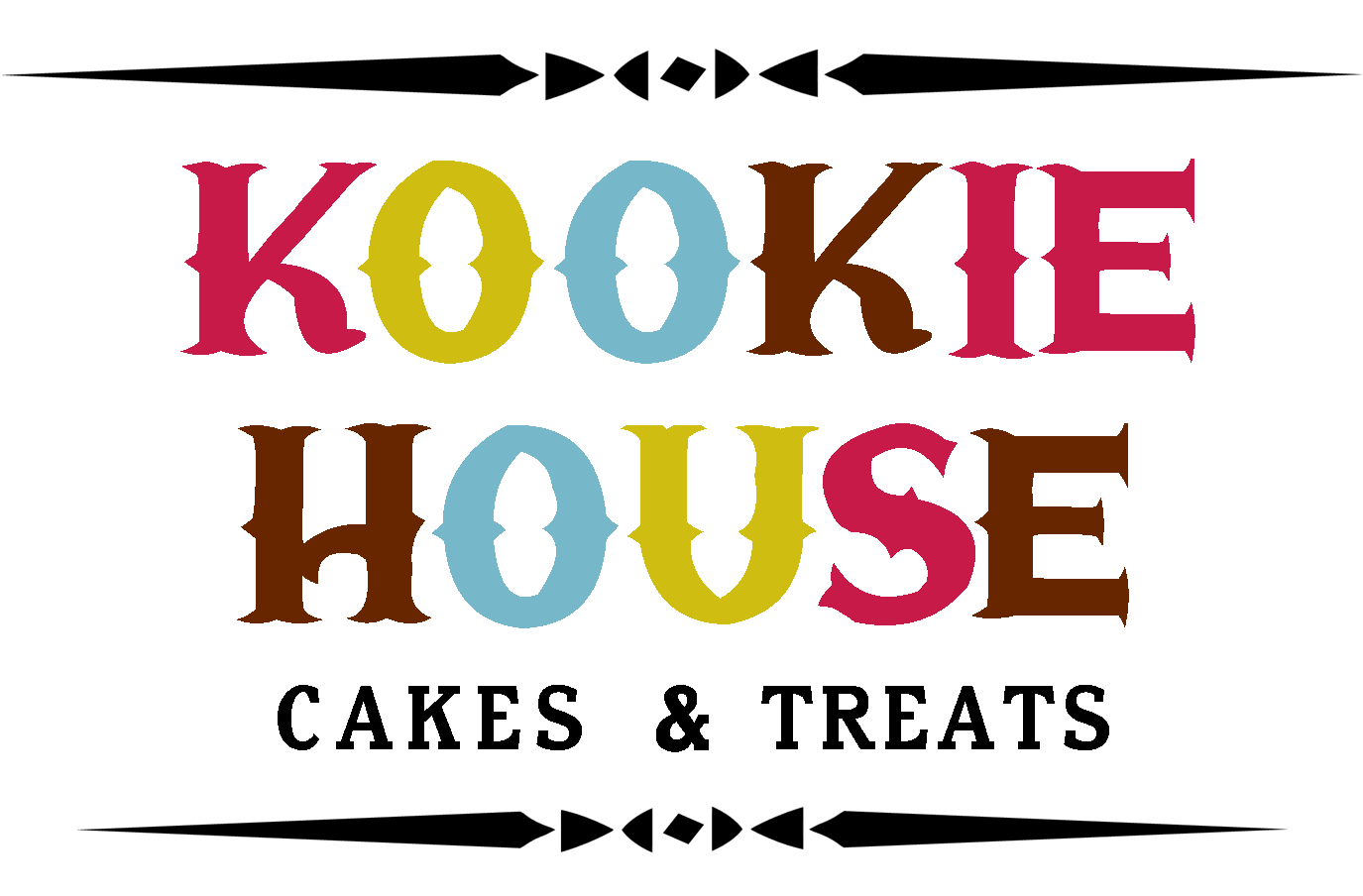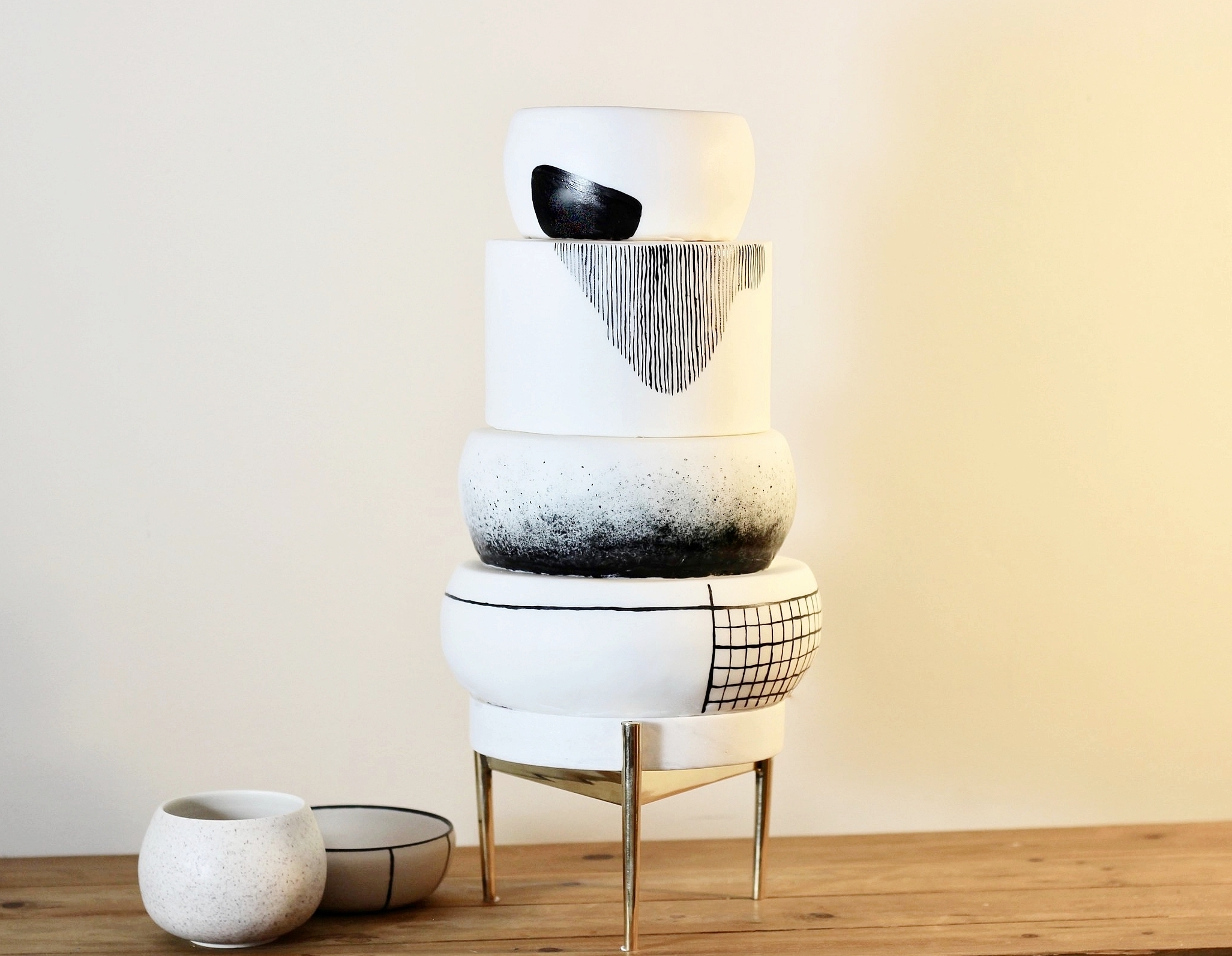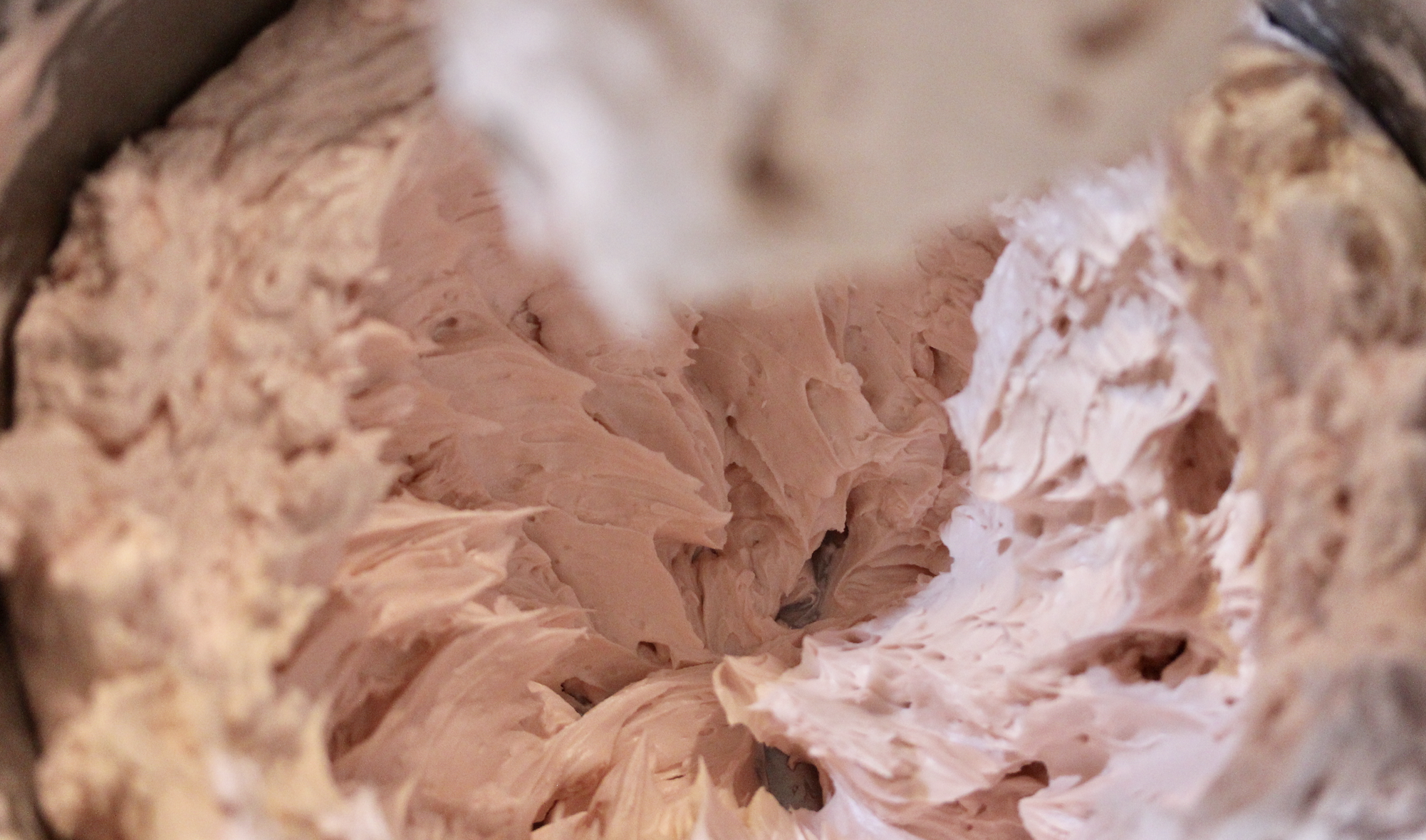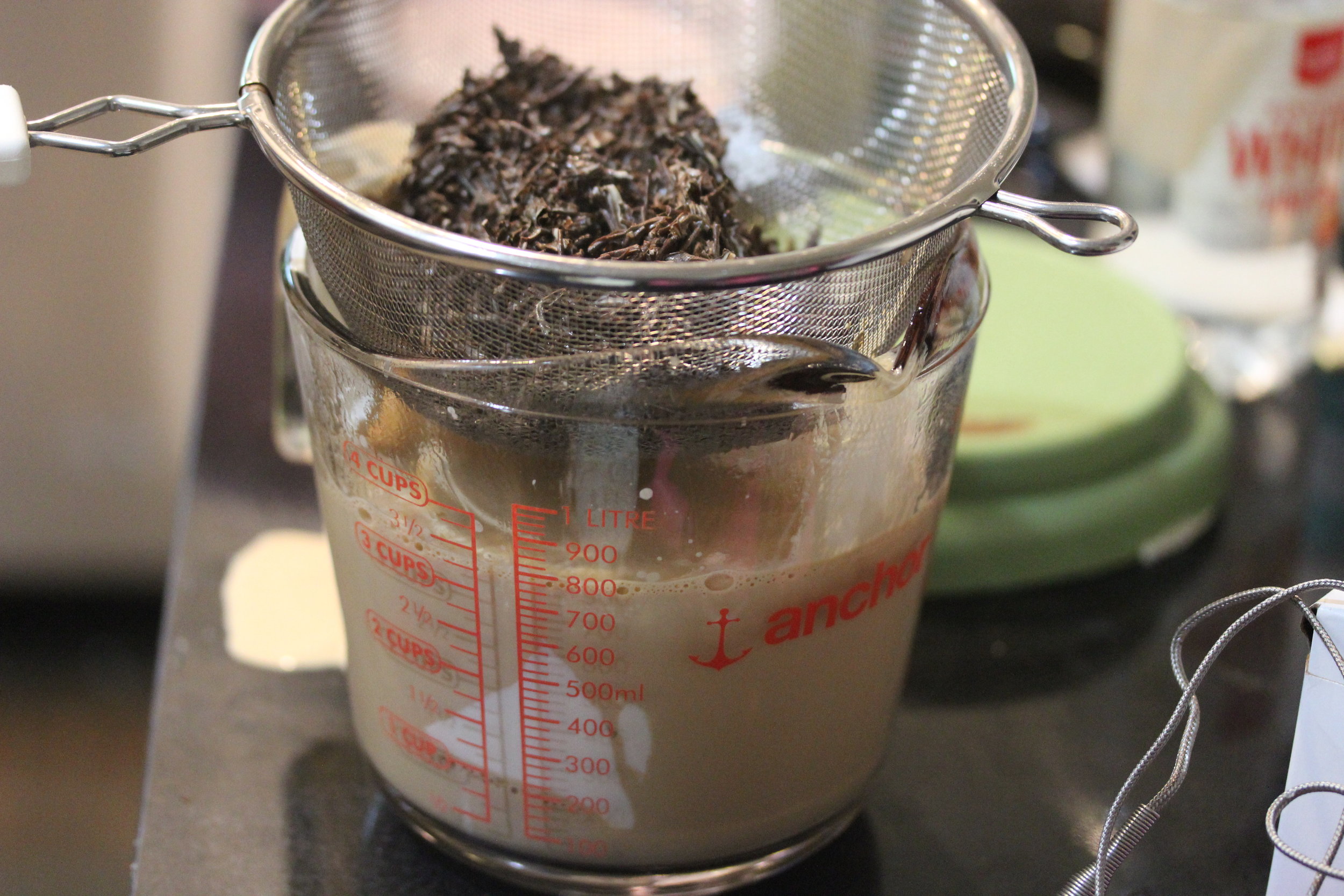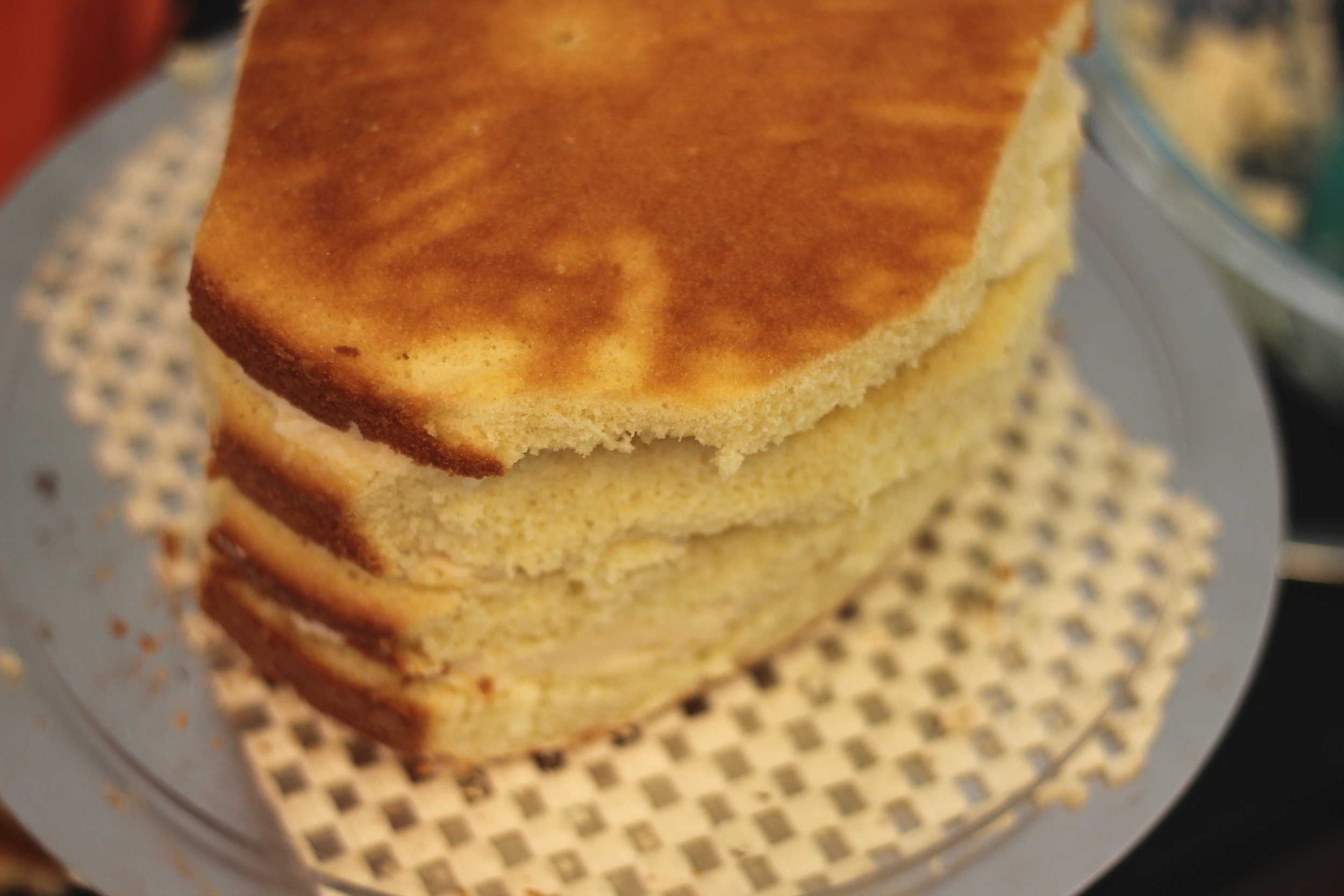It's been a while since I have reminded you of how much I love tea, I realize.
Assam tea in particular has such a rich, malty taste that I knew it would be delicious in a cake, especially paired with a bright, floral-ish citrus like blood orange. The flavor combination is delicate and interesting, one of my new favorites.
The design for this cake was inspired by one of my favorite local Atlanta artist, Charlotte Smith. I fell in love with her work when I purchased one of her tea cups (pictured above) from Young Blood Boutique and filled it with tea and held it in my hands. Her cups are transcendent vessels for tea lovers, just the perfect size and comfortable shape for cradling. I love her elegant minimal aesthetic, rendered here in these tiers with admiration.
Italian meringue buttercream is probably, as we've been over before, the most annoying of all the buttercreams to make because it requires extra steps, precise temperature monitoring, and a long wait for cooling. But man, it is really worth it once in a while. If you've never made one before, set aside an hour or so and treat yourself to this incomparably silky treat.
Now, one of the important things in making IMB is allowing the meringue to cool to 80 degrees F before adding the butter. BUT! If you are impatient and mess it up, as I have done many times, you will end up with a horrific cottage-cheese like mess that seems irredeemable, but it's not. Just keep letting it cool and whip, and it will come together into its true silky smooth form. I used fresh blood orange juice in place of the water used for the sugar syrup here, giving the buttercream a mellow citrus flavor and a light pink color. You could definitely use any other citrus here if you preferred, just be sure to strain the juice well to remove the solids. Blood oranges are less acidic and more floral than regular oranges and yes, add more sweetness to the buttercream but I didn't adjust the sugar since I find that often IMB can use a bit more sweetness.
I don't recommend trying to make this buttercream without a stand mixer. You may actually die from trying to hold a hand mixer for a freaking hour. Plus trying to pour in the syrup with the other hand...just, no.
Read the instructions a few times in advance and be prepared to act fast when your sugar syrup reaches soft ball stage (240 degrees)--higher temps will result in stiff syrup that doesn't incorporate properly. I love my ChefAlarm thermometer from Thermoworks. You can set an alarm to beep at a certain temp so you don't have to stand there watching it.
BLOOD ORANGE ITALIAN MERINGUE BUTTERCREAM
5 large egg whites, cold
1 lb (4 sticks) unsalted butter, room temperature, cubed
6 oz and 2 oz granulated sugar, separated
1/4 c. fresh blood orange juice, strained
1/2 tsp fine sea or kosher salt
pinch cream of tartar
1/4 tsp. vanilla extract
Place egg whites in a stand mixer bowl with cream of tartar. Whip with whisk attachment on medium speed, no higher, to soft peaks. Add 2 oz of sugar and salt gradually, beat to stiff peaks then turn off mixer.
Heat juice and 6 oz of sugar over low heat until sugar is dissolved, stirring constantly, then raise the heat to medium and clip in thermometer. Bring to a low boil until temperature reaches 240 degrees F. As soon as thermometer hits 240, remove from heat, turn mixer on low, and slowly pour a syrup in a thin stream between the mixer bowl and the whisk; do not scrape bowl or whisk if unincorporated syrup remains. Beat on medium until meringue is fully incorporated. Place mixer bowl in the freezer or fridge to cool for about 15 minutes, or until mixture lowers to 90 degrees.
Return mixer bowl to stand and mix on low until temperature reaches 80 degrees F. Add soft butter, one piece at a time, waiting until each cube is fully incorporated before adding more. This process can take up to 25 minutes. Once all the butter is added, beat until mixture is smooth and fluffy. Add vanilla extract or other extracts as desired.
If mixture breaks and looks curdled, allow to cool further then keep mixing until mixture comes together
I had been making a Chai cake recently using a homemade Chai extract, and that was pretty good, but the flavor didn't have quite enough depth. Following the time-tested rule of putting flavor as close to fat as possible for maximum power, I decided to steep the tea in my heavy cream and boy oh boy did that work. The cream carries incredible flavor to the finished cake and the tea payoff is incredible. I thinned the cream a bit with water just to make it looser and easier for the tea to absorb.
I doubled this recipe so was using a full half cup of tea in this cream, which seemed like a hilariously large amount of tea to use for anything, and with the intensity of the results, I almost felt like it was too much! But the day after baking, the cake had mellowed a bit in flavor and it seemed exactly right.
Spring is now melting away into summer, aka berry season. But it might not be until late summer when I'll be posting again, undoubtedly with some transformation of the season's treasures into some little art project, as I'll be in Europe soon to do some writing for a few months. Find me on Instagram to track my progress on my next adventure!
ASSAM CAKE
3 c. (350 g.) cake flour (White Lily)
3 1/4 tsp. (12 g.) aluminum-free baking powder
5 large egg whites
2 c. (400 g.) sugar
1 tsp. white vinegar
1 tsp. fine sea salt or kosher salt
1/4 c. loose Assam tea
1 1/4 c. heavy whipping cream
1/4 c. water
3/4 c. (155 g.) sour cream
2 Tbsp. vanilla extract or one vanilla bean, scraped
2/3 c. canola or vegetable oil
Preheat oven to 350 degrees F.
Whisk flours and baking powder together thoroughly in a large bowl and set aside.
Bring cream and water to a simmer over low heat in a small saucepan. Add the tea leaves and turn off the heat, allowing the tea to steep for about 15-20 minutes, stirring occasionally. Drain leaves from cream and allow the cream to cool in the fridge for another 15-20 minutes.
Beat egg whites, sugar, salt and vinegar for one minute (use a timer) on medium high until mixture is thick. Add sour cream to heavy cream and beat until smooth. Add cream mixture gradually to sugar mixture, then vanilla, and beat until smooth for 30 seconds.
Add oil to the flour mixture and beat until a dough forms. Add 1/3 of the cream mixture and beat until smooth and lump-free. Repeat with the remaining 2/3rds, scraping the bottom of the bowl and making sure no lumps remain.
Divide batter among three greased and floured 8" or 9" pans and tap on the counter to remove large air bubbles. Bake for 15-25 minutes until centers are fully set and spring back when pressed. Allow to cool for 15 minutes in the pan, then level, fill, and frost.
